Abstract
1. The step inflation technique combined with nerve section and pharmacological receptor blockade was used to determine the gastric distribution of the vagal inhibitory fibres and their role in the regulation of intragastric pressure in the anaesthetized ferret.
2. Under the conditions described the predominant effect of the vagus was inhibitory. The dorsal abdominal vagus mediated more inhibition than the ventral vagal trunk. There was partial overlap in the inhibitory effects of the two trunks but, in contrast to excitatory effects, this overlap was less than complete.
3. No evidence was found to indicate that the intramural inhibitory neurones (demonstrated pharmacologically) could be activated by a local distensive stimulus or that local inhibitory reflexes played an independent role in the regulation of intragastric pressure. The vago—vagal inhibitory reflexes play the major (possibly the only) part in the over-all regulation of intragastric pressure.
4. After a step gastric inflation (50 ml. in < 3 sec) the time taken for the intragastric pressure to fall to 1/e of the peak pressure was a function of the number of inflations; the time decreased with increased number of inflations. It was apparently unaffected by nerve lesions.
5. The intragastric pressure in response to an inflation, besides being a function of the neural reflexes evoked, was also related to the gastric weight and hence the size of the animal.
6. The sum of the prevailing intragastric pressure and the response to vagal stimulation (10 Hz, 10 sec) was similar, irrespective of the intragastric fluid volume (10-80 ml.).
7. The volume of fluid in the corpus was shown to be a major determinant of the contraction produced in response to vagal stimulation: as the corpus volume increased the corpus contraction decreased but the relaxation that follows the contraction increased. A similar effect was observed with intra-arterial ACh which implies that the response to stimulation was modified directly by the degree of stretch of the smooth muscle cells. Inhibitory effects were not apparent unless the stomach was moderately inflated.
8. The relative roles of the vagal reflexes, intramural reflexes and the smooth muscle in the regulation of intragastric pressure are discussed in the light of the above observations.
Full text
PDF


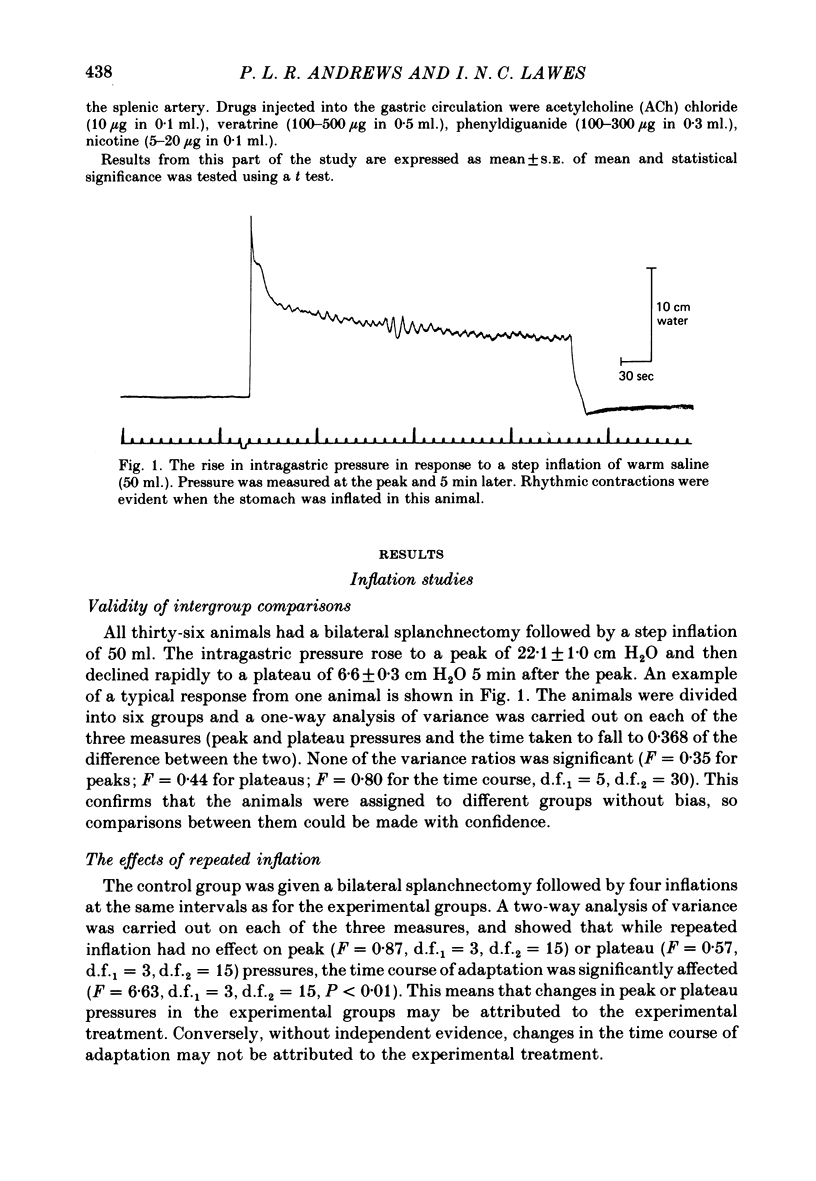
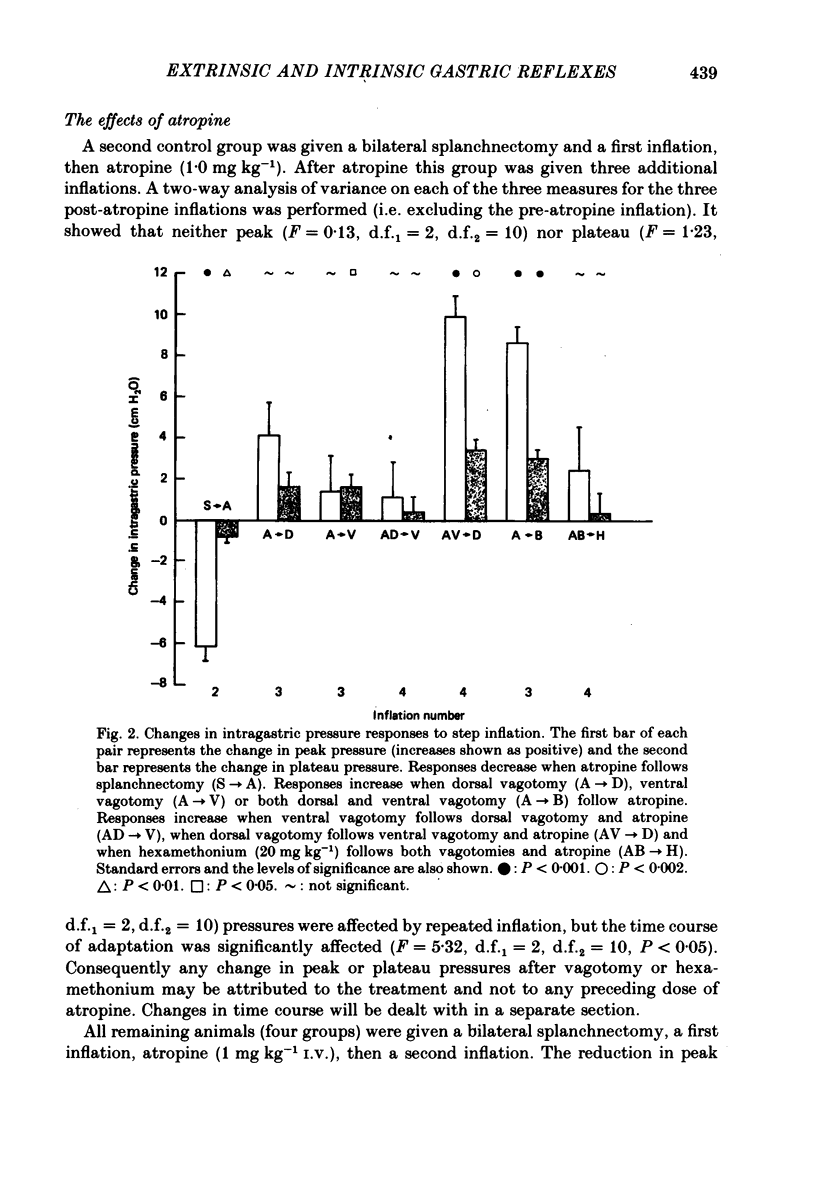
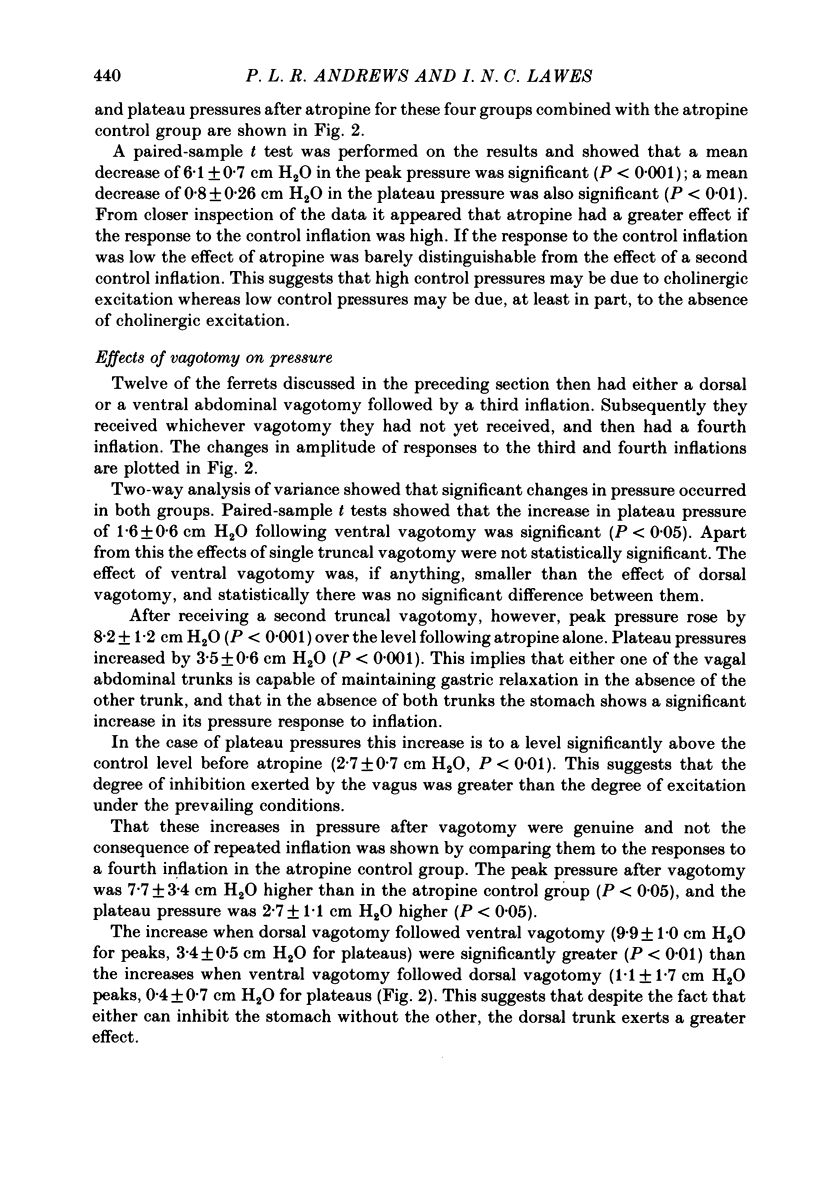
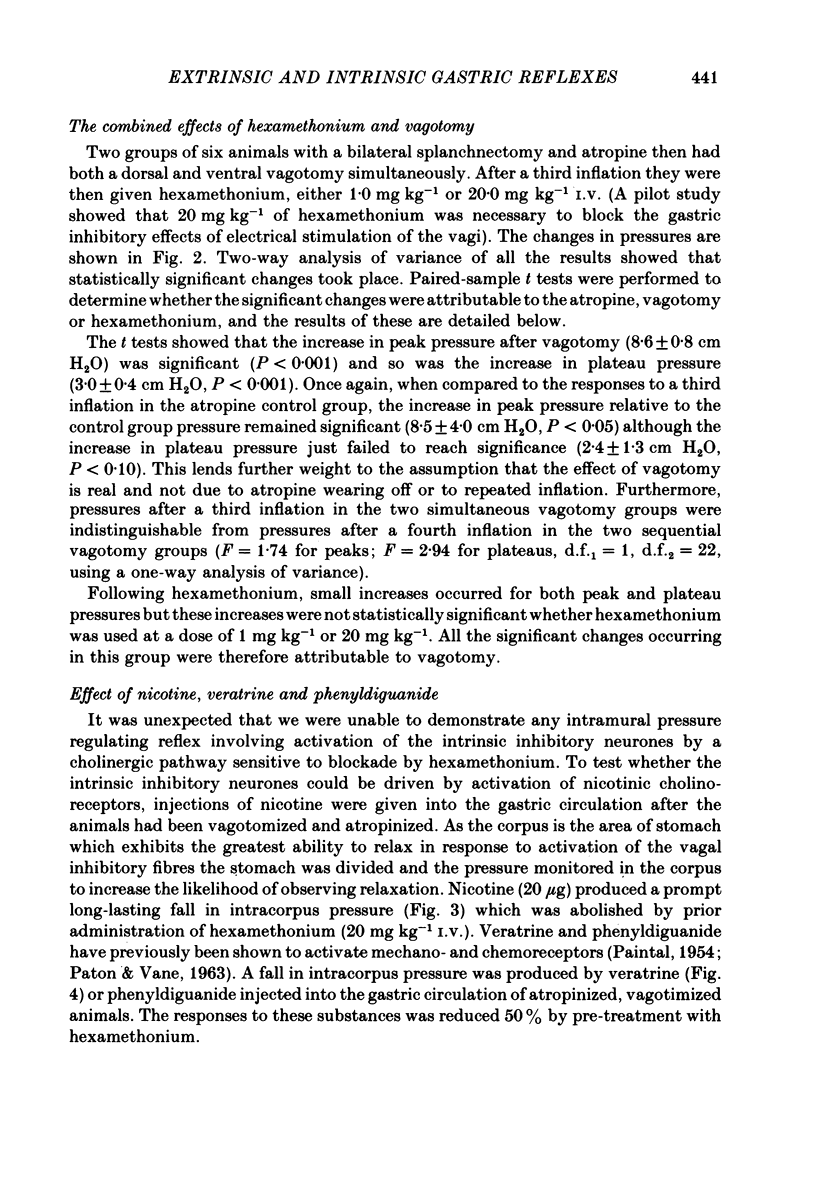

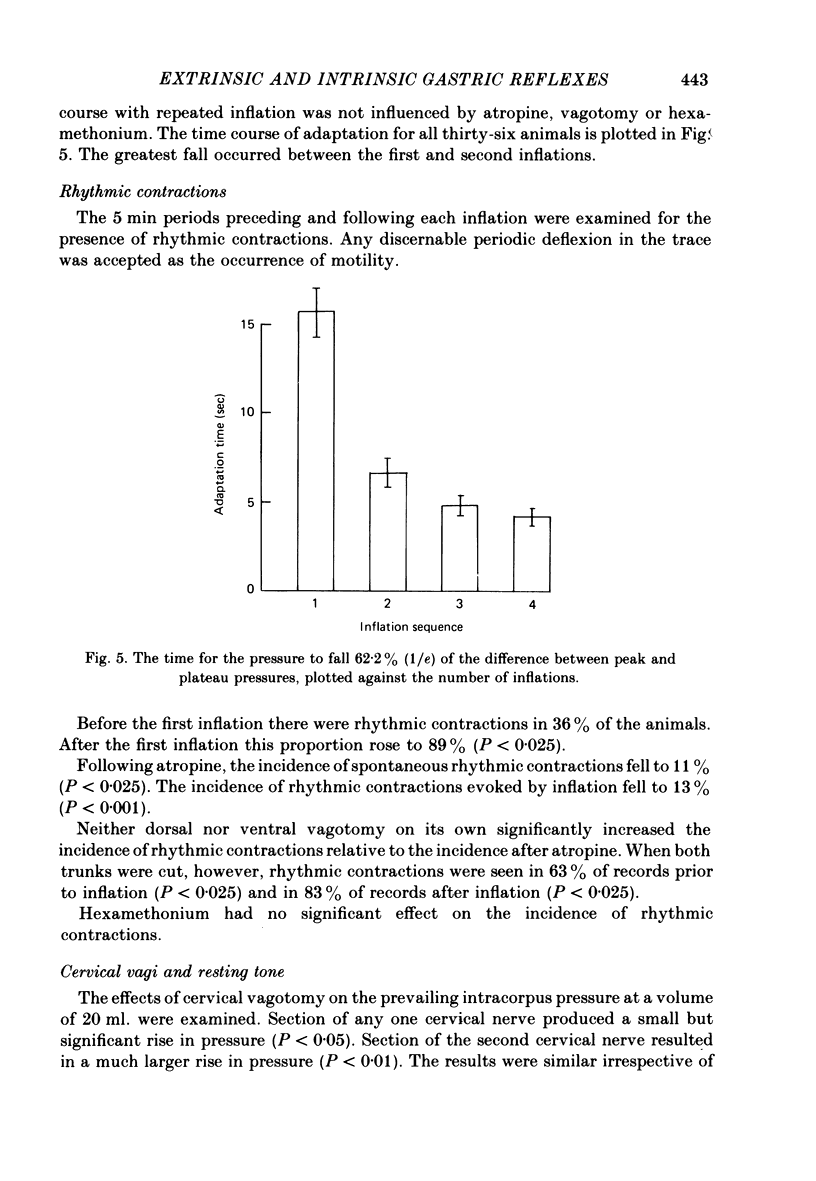
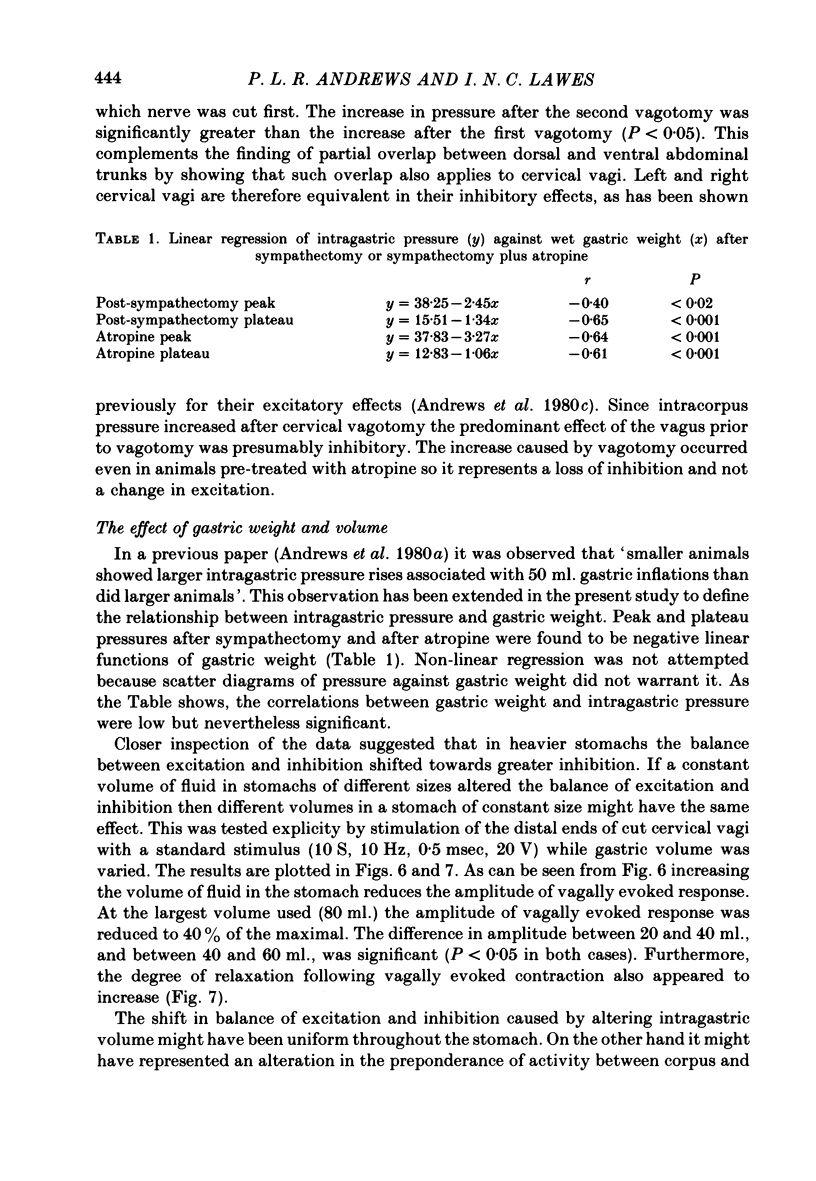
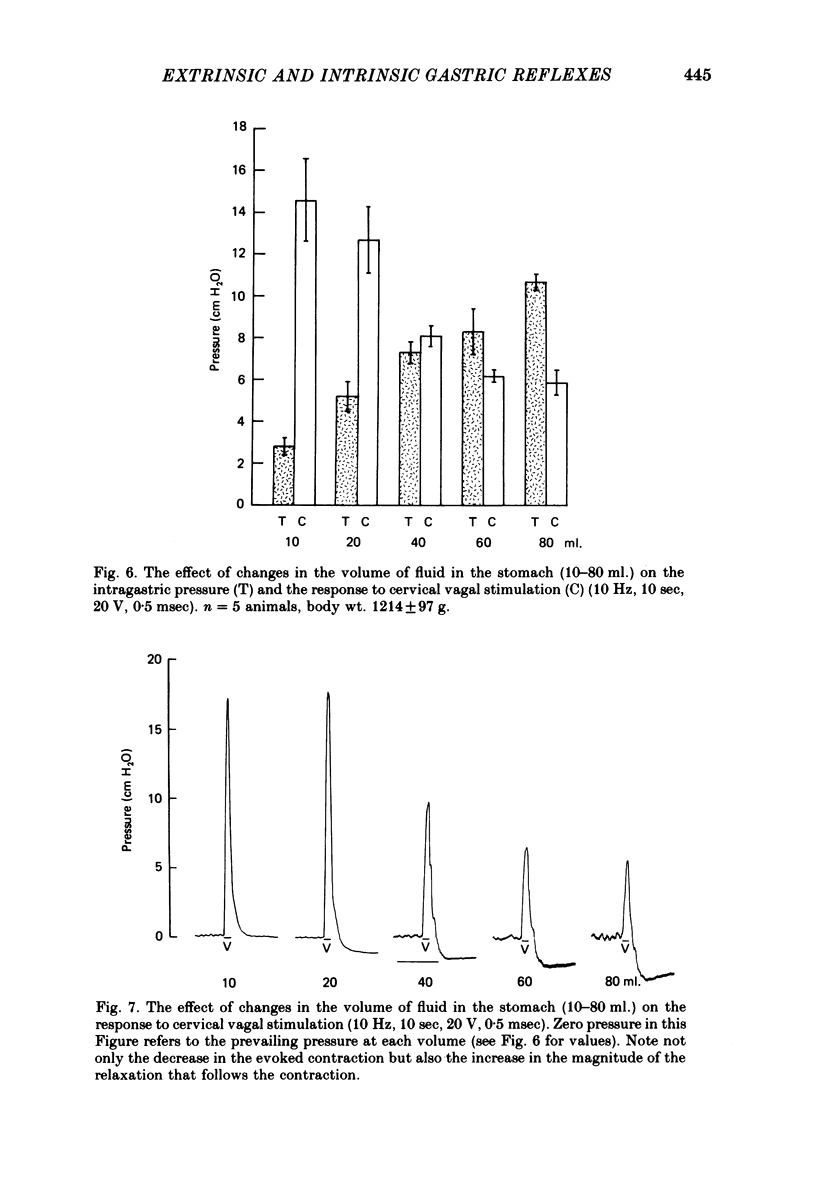
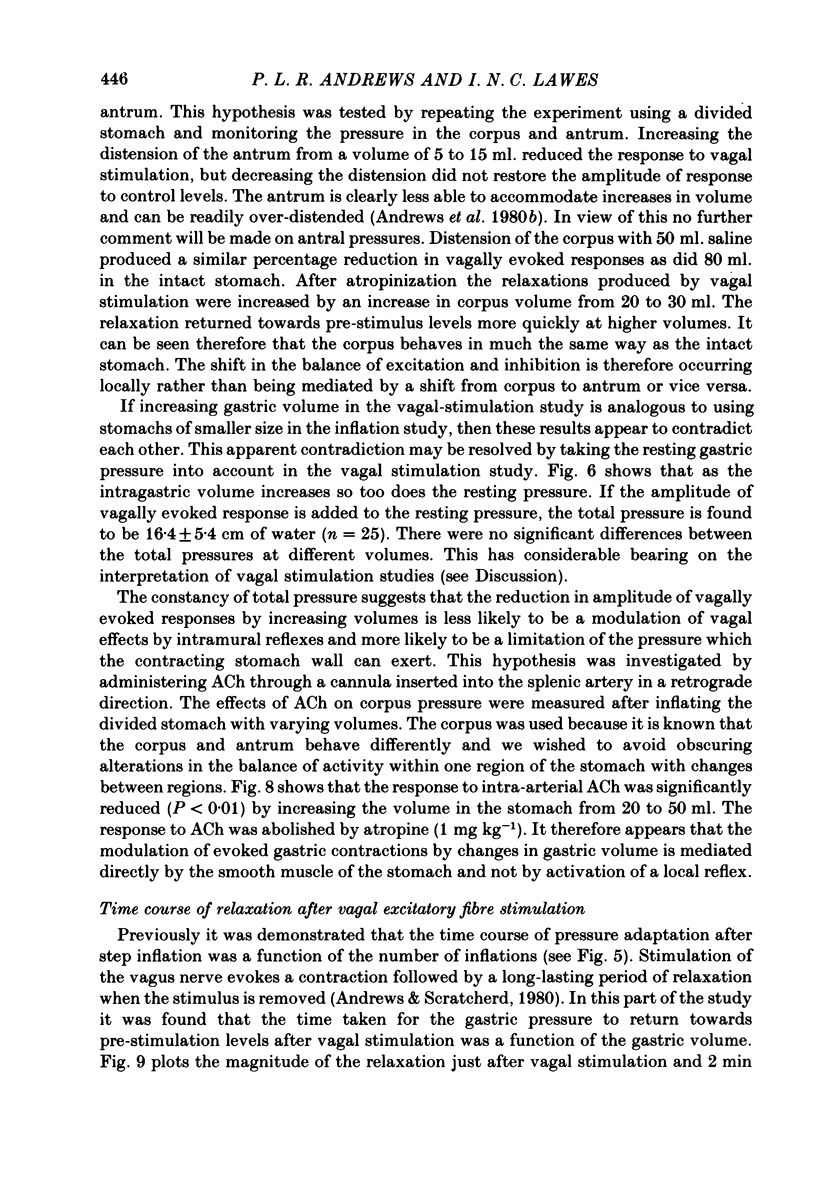
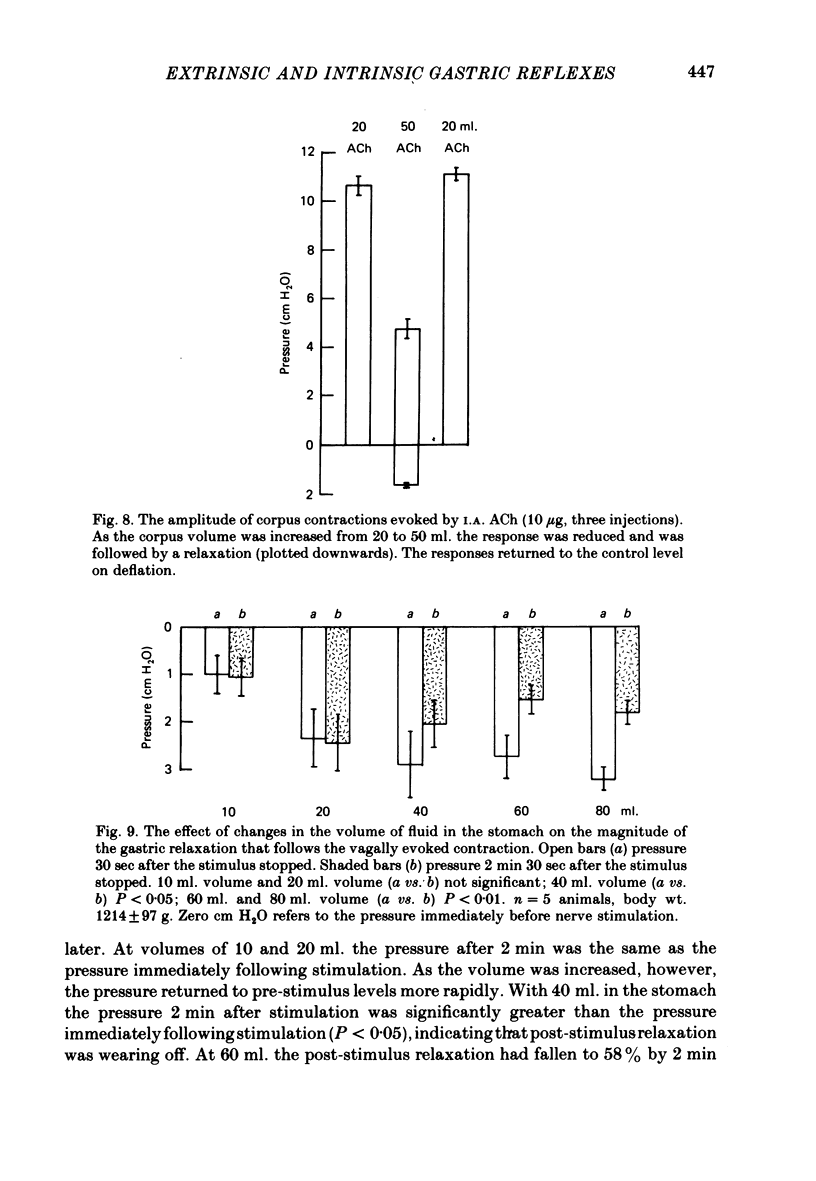
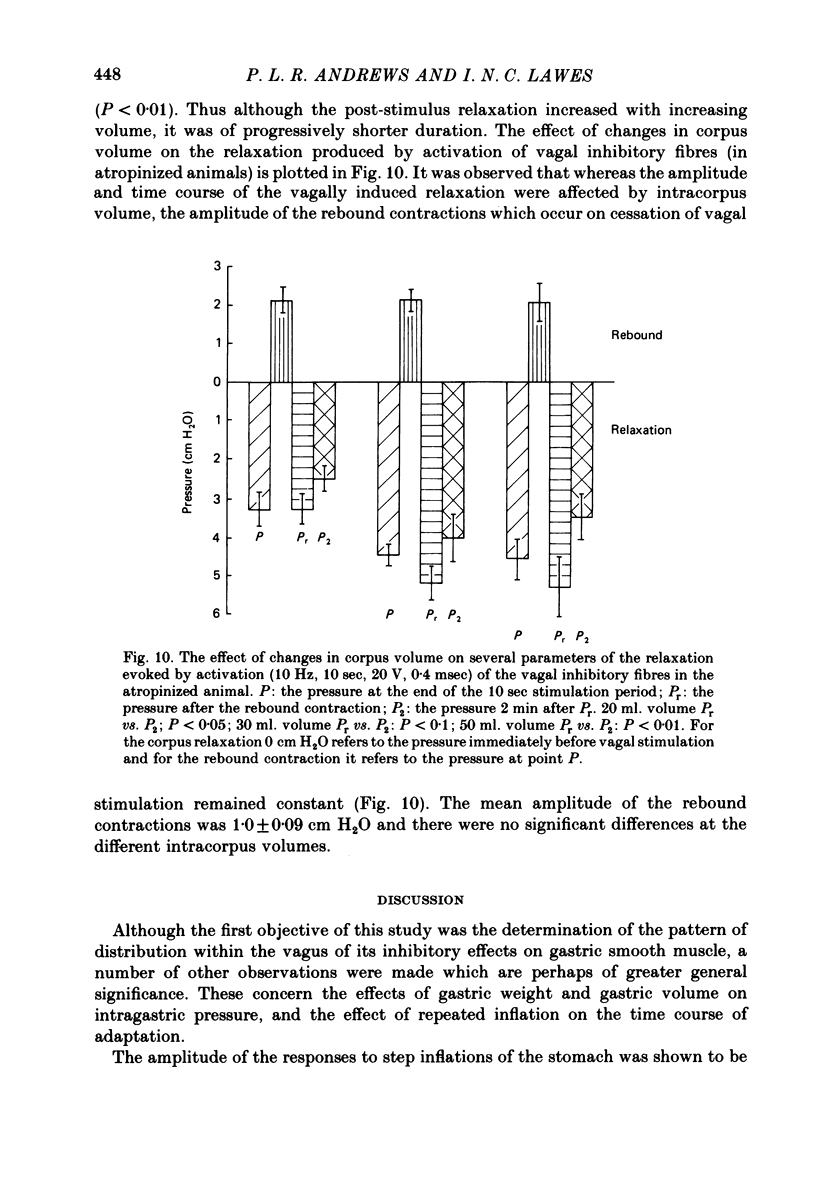

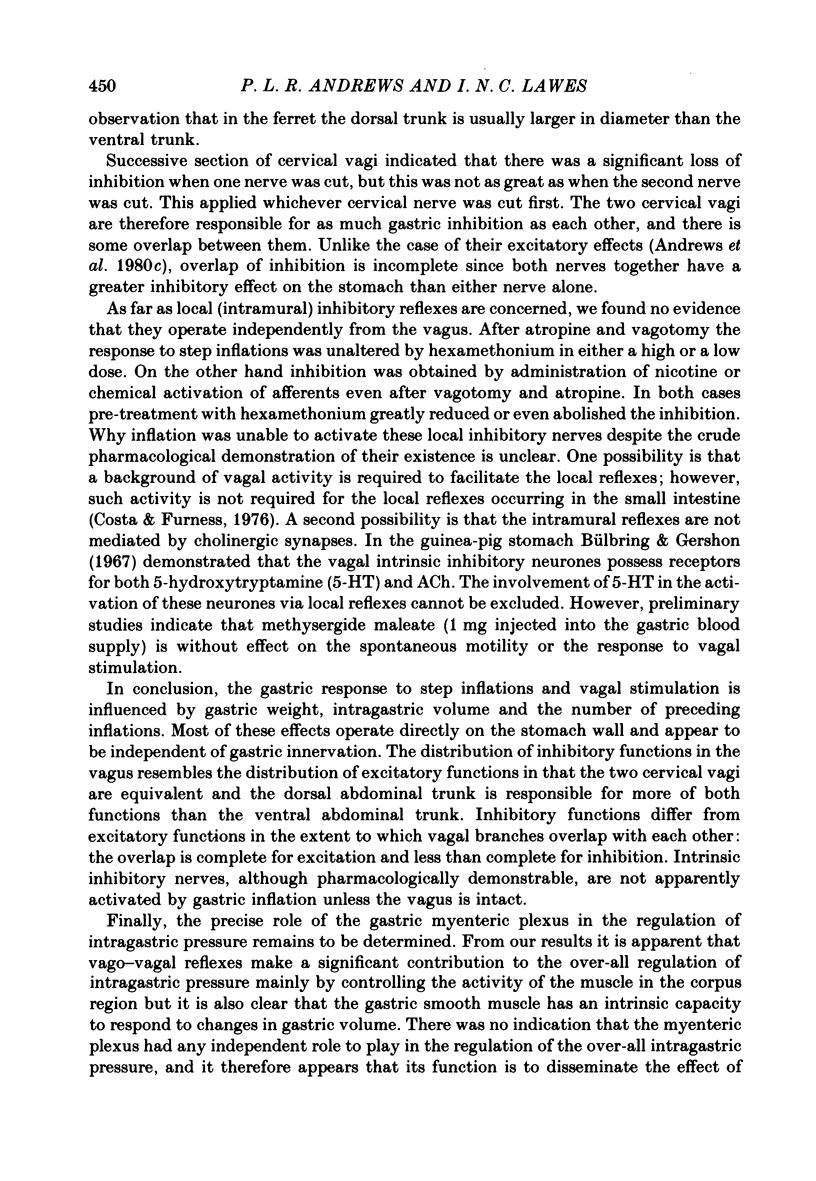
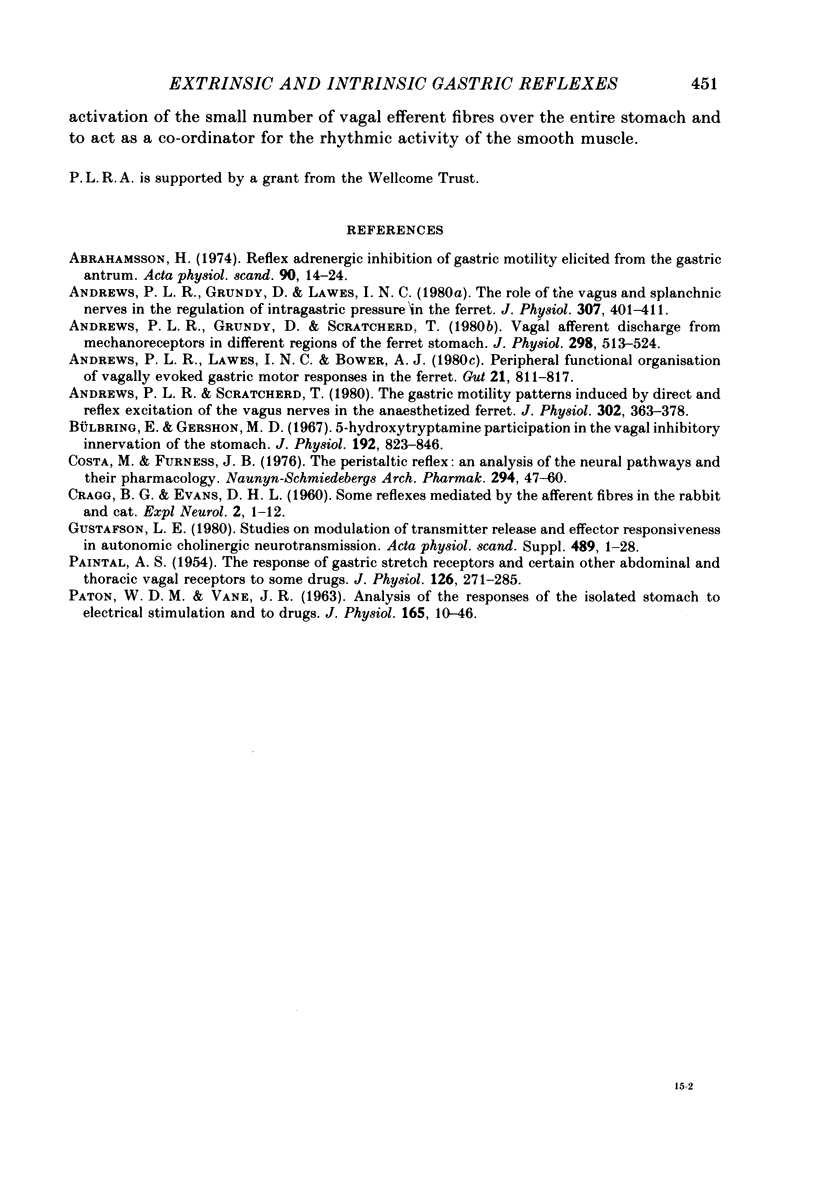
Selected References
These references are in PubMed. This may not be the complete list of references from this article.
- Abrahamsson H. Reflex adrenergic inhibition of gastric motility elicited from the gastric antrum. Acta Physiol Scand. 1974 Jan;90(1):14–24. doi: 10.1111/j.1748-1716.1974.tb05558.x. [DOI] [PubMed] [Google Scholar]
- Andrews P. L., Grundy D., Lawes I. N. The role of the vagus and splanchnic nerves in the regulation of intragastric pressure in the ferret. J Physiol. 1980 Oct;307:401–411. doi: 10.1113/jphysiol.1980.sp013442. [DOI] [PMC free article] [PubMed] [Google Scholar]
- Andrews P. L., Grundy D., Scratcherd T. Vagal afferent discharge from mechanoreceptors in different regions of the ferret stomach. J Physiol. 1980 Jan;298:513–524. doi: 10.1113/jphysiol.1980.sp013098. [DOI] [PMC free article] [PubMed] [Google Scholar]
- Andrews P. L., Lawes I. N., Bower A. J. Peripheral functional organisation of vagally evoked gastric motor responses in the ferret. Gut. 1980 Oct;21(10):811–817. doi: 10.1136/gut.21.10.811. [DOI] [PMC free article] [PubMed] [Google Scholar]
- Andrews P. L., Scratcherd T. The gastric motility patterns induced by direct and reflex excitation of the vagus nerves in the anaesthetized ferret. J Physiol. 1980 May;302:363–378. doi: 10.1113/jphysiol.1980.sp013248. [DOI] [PMC free article] [PubMed] [Google Scholar]
- Bülbring E., Gershon M. D. 5-hydroxytryptamine participation in the vagal inhibitory innervation of the stomach. J Physiol. 1967 Oct;192(3):823–846. doi: 10.1113/jphysiol.1967.sp008334. [DOI] [PMC free article] [PubMed] [Google Scholar]
- CRAGG B. G., EVANS D. H. Some reflexes mediated by the afferent fibers of the abdominal vagus in the rabbit and cat. Exp Neurol. 1960 Feb;2:1–12. doi: 10.1016/0014-4886(60)90043-1. [DOI] [PubMed] [Google Scholar]
- Costa M., Furness J. B. The peristaltic reflex: an analysis of the nerve pathways and their pharmacology. Naunyn Schmiedebergs Arch Pharmacol. 1976 Jul;294(1):47–60. doi: 10.1007/BF00692784. [DOI] [PubMed] [Google Scholar]
- Gustafsson L. E. Studies on modulation of transmitter release and effector responsiveness in autonomic cholinergic neurotransmission. Acta Physiol Scand Suppl. 1980;489:1–28. [PubMed] [Google Scholar]
- PAINTAL A. S. The response of gastric stretch receptors and certain other abdominal and thoracic vagal receptors to some drugs. J Physiol. 1954 Nov 29;126(2):271–285. doi: 10.1113/jphysiol.1954.sp005208. [DOI] [PMC free article] [PubMed] [Google Scholar]
- PATON W. D., VANE J. R. Analysis of he responses of the isolated stomach to electrical stimulation and to drugs. J Physiol. 1963 Jan;165:10–46. doi: 10.1113/jphysiol.1963.sp007040. [DOI] [PMC free article] [PubMed] [Google Scholar]


